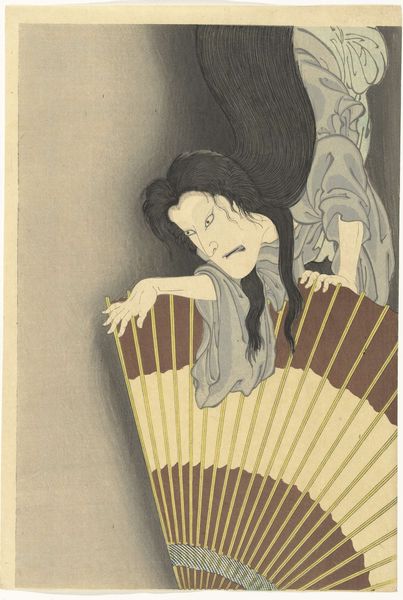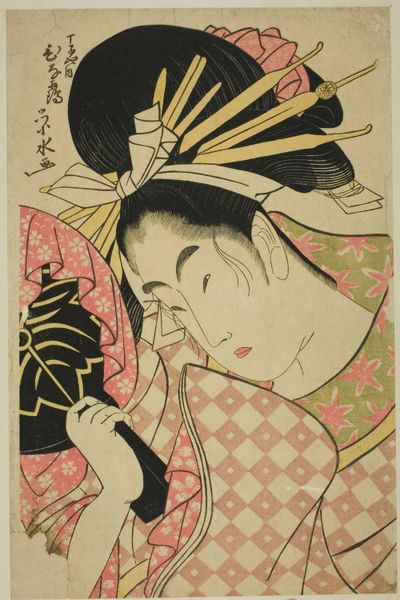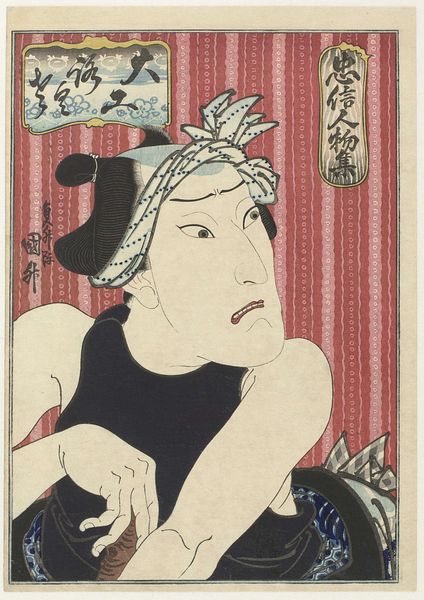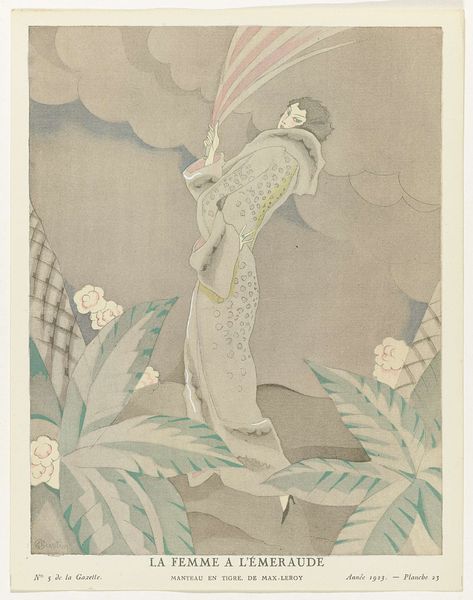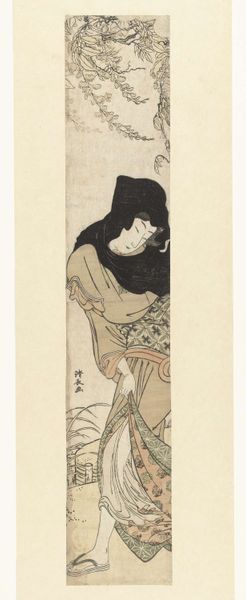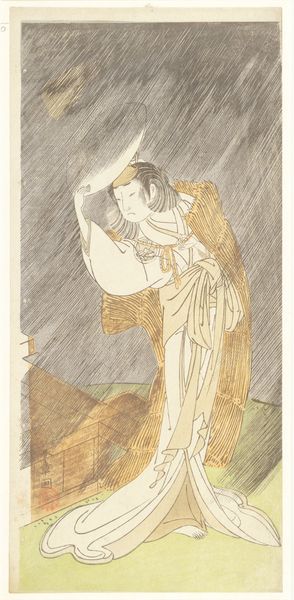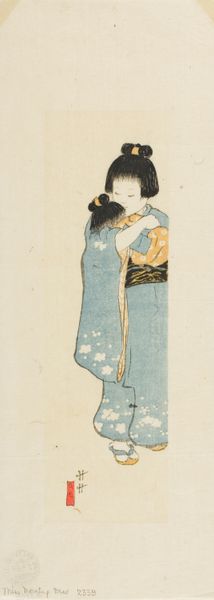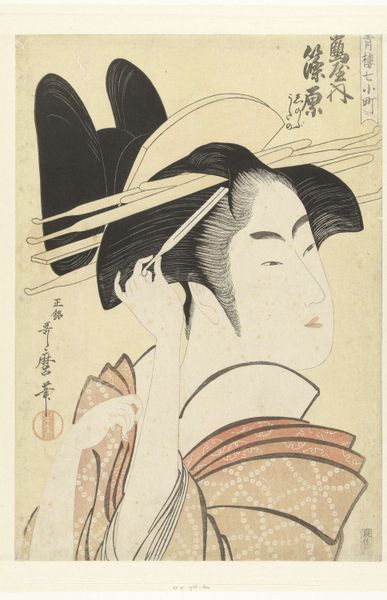
Dimensions: height 355 mm, width 255 mm
Copyright: Rijks Museum: Open Domain
Editor: So, this striking triptych, "Samourai Aoyama en het spook Okiku," by Toyohara Kunichika, dates from 1892. It's a woodblock print, which I find particularly fascinating. What first grabs me is the incredibly dynamic composition and, dare I say, spooky atmosphere. What do you see in it? Curator: The use of woodblock printing here speaks volumes. Each cut, each colour laid down, is a conscious decision reflecting not only Kunichika's artistry, but the larger structure of labor and consumption embedded in the *ukiyo-e* tradition. We see figuration, yes, but the medium itself should prompt questions: who were the artisans, and what was their social position? How were these prints circulated and consumed, and by whom? Editor: That's a great point. It really highlights the collaborative nature of the work, which I hadn't fully considered beyond Kunichika himself. It's easy to forget all the skilled labour involved. Curator: Exactly! Think about the economic landscape too. *Ukiyo-e* flourished in a time of significant urban development and a rising merchant class. These prints weren’t high art in the Western sense; they were affordable, mass-produced images catering to a specific consumer base. How does that impact the stories they depict, the aesthetic choices? Editor: That forces me to see this print less as a simple artwork and more as an artifact representing production and broader societal structures. Is that the right way to interpret it? Curator: Absolutely! By looking at the materials, the methods of production, and the social context, we can unpack not just what the image depicts, but what it *does*. Editor: I definitely have a newfound appreciation for how this piece fits into its social environment, thanks to its production. Curator: And I've been reminded of how striking *ukiyo-e* woodcuts remain to audiences, more than a century on. A testament to the power of the method and the labour.
Comments
No comments
Be the first to comment and join the conversation on the ultimate creative platform.
